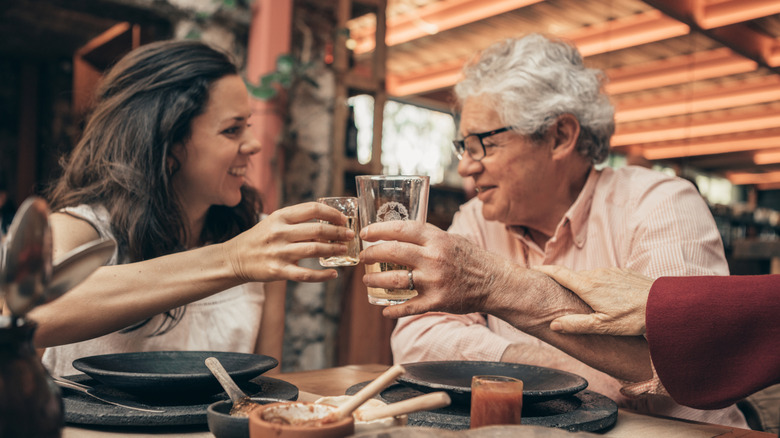Why Tequila Can Only Legally Be Made In Mexico
Ever wondered why Kendall Jenner's fast-growing tequila brand, 818 Tequila, isn't made in the United States? She named it after the area code of her home in Calabasas, California, but the alcoholic beverage is produced at a distillery in Mexico. Specifically, Jalisco; the same state where many other major tequila brands are made, including Patrón, Don Julio, and Jose Cuervo (the iconic tequila brand Chili's uses in its house margaritas). Come to think of it, whenever people think of tequila, they automatically associate it with Mexico. We once labeled it as Mexico's famously misunderstood spirit. But why is this so?
Well, aside from being invented in Mexico, it's the only country that has the legal rights to its production thanks to the Denomination of Origin Tequila (DOT), a designation protected by Mexican law that defines the geographical locations where the drink can be produced. The locations include just five states in Mexico. Namely: Jalisco, Michoacán, Guanajuato, Nayarit, and Tamaulipas. Additionally, the Mexican government has claimed ownership of the word tequila and its intellectual property since 1974. This would explain why Jenner's popular tequila brand doesn't have a production facility within the United States. She's not allowed to.
Agave-based spirits can still be made outside of Mexico
As one of the strongest alcoholic beverages you can drink, tequila's alcohol content ranges between 35% and 55% ABV. Its main ingredient is blue weber agave, which is cooked, shredded, and fermented before getting distilled into its final form. The plant is native to Mexico and grown in the five states where tequila is produced.
Other countries have started growing blue weber agave despite the restrictions. Far North Queensland in Australia, for example, has been cultivating the plant. California has also been growing a variety of agaves for distillation. South Africa, Peru, Venezuela, and India are doing the same.
However, since Mexico owns the legal rights for tequila, nothing distilled from blue weber agave outside of the country can be recognized or labeled as tequila. Tequila manufactured outside of the five authorized Mexican states can only be referred to as mezcal or agave spirit. Thus, even though it's not illegal for companies outside of Mexico to make what basically amounts to the same thing, it's unlawful for them to market their products as such. After all, tequila already has an established global presence, with a revenue amounting to $28.58 billion as of 2025. It's just good business for Mexico to protect an important sector of its economy in this way.

